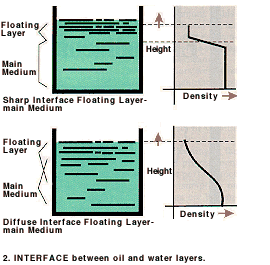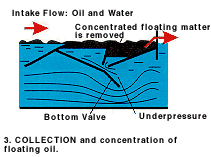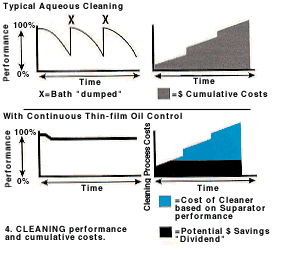Second Generation Aqueous Cleaning-- an Update in Conventional Wisdom
The changing role of aqueous cleaners and the impact of high-efficiency oil contaminant control in the parts washing/finishing pretreatment process...
"You can make a poor coating perform with excellent pretreatment, but you can't make an excellent coating perform with poor pretreatment."(1) The critical importance of effective pretreatment is captured in this adage.
Parts not already primed and painted/coated, require that surface soils, grease, general dirt and debris be removed in order to obtain uniform coating and paint adhesion. Failure to pretreat effectively can lead to re-work or high levels of rejects if the parts are painted/coated before the contamination is detected. Cleaning is critical.
Featured Content
Beyond the chemical and mechanical factors involved in the pretreatment process, there are other external and internal drivers:
- Elimination of vapor degreasing;
- Tightening of discharge permit levels under the clean water regulations;
- The emphasis on product quality (including TQM and ISO programs); and,
- The market forces of surviving in a highly competitive environment.
The impact on pretreatment when switching to aqueous cleaning. Directives to eliminate the use of vapor degreasing (CFCs and other halogens) and the tightening of effluent discharge standards under clean water legislation have increased the importance of selecting the best system for a given process.
Although nothing will ever clean as quickly as 1, 1, 1-trichloroethane, aqueous cleaning has emerged as the dominant replacement cleaning method and has many performance advantages. While one of the downsides of aqueous cleaning is that it may result in a longer drying period, an added advantage is that, used properly, alkaline cleaners or neutral pH cleaners,(2) will leave the surface in a water-break-free condition, whereas vapor degreasing will not.
With the emphasis on quality, there are divergent opinions as to how to achieve the critical goal of a totally clean surface. Industry experts give a range of advice:
- Close and constant monitoring of the cleaner bath, with frequent dumping to ensure the integrity of the process;
- Five-stage pretreatment system is better than a three-stage system; and,
- Rinse within the pretreatment process, suggesting that because water is the least costly chemical within the overall process it is better to use large volumes of rinse water and dump the rinse tanks constantly.
The focus of a successfully implemented and operated pretreatment system is not limited to either the mechanical or chemical element. Operational success requires an effective synergy between both elements. Operational success is measured by how cost-effective the total system is in delivering clean parts.
Manufacturing pretreatment costs are always an aggregate of various factors, including the following:
- Extra handling/cleaning/rinsing of the part;
- Unavailability for recapture and re-use of cleaner and lubricants;
- High aqueous cleaner and lubricant consumption costs;
- Downtime caused by frequently dumping the aqueous cleaners and wash/rinse tank maintenance;
- Associated operating and payroll costs; and,
- Disposal costs.
Cost-effective aqueous cleaning (better first-time parts cleanliness quality, extended use of cleaners, less frequent dumping of the cleaner, overflowing of rinse tanks) begins with a basic change in the conventional wisdom regarding the role of cleaners.
Aqueous cleaning: Some basics. Bear in mind that aqueous cleaning is not new. Soap is an aqueous cleaner, and it's almost as old as humanity.
Certain factors play an important role in the selection and use of an industrial cleaner. By making compensating adjustments within two or more elements in this "circle of four," the parameters and goals for each particular process can be improved (Fig. 1).
The main contaminants are oil and grease. When removing them, the cleaner may also become contaminated with suspended solids (dirt). Separation of these resultant mixtures is by far the fastest growing area in the wastewater and industrial aqueous treatment sectors.
There are two factors that improve the life of the cleaner and performance of the leaning process: 1) The chemistry used (soil removal); and 2) The physical oil contaminant control methods (mechanical separation) employed.
Soil removal. Every cleaner has a certain capacity to absorb oil and dirt. However, once this capacity is exhausted the cleaner needs to be replaced. If neglected, it will negatively affect finished product quality. It is this need for frequent disposal and replacement that can make cleaning costs skyrocket.
Cleaners developed for industrial use have been formulated with regard to the particular cleaning task (type of soil, type of material to be cleaned or required cleanliness) and the requisite corrosion protection. By selecting aqueous cleaners as a replacement for vapor or solvent degreasers, manufacturers are looking to avoid the VOC emissions caused by solvent losses. Brad Gruss, Fremont Industries, Shakopee, Minnesota, in his paper "Cleaning and Surface Preparation,"(3) sets out clearly the varying mechanisms of aqueous cleaning.
When aqueous cleaners were first adopted in broader manufacturing processes, there was a narrow focus on their cleaning properties. The consumption issues involved were ignored due to the higher priority of volatile solvent replacement.
Now that aqueous cleaning is the dominant cleaning and pretreatment method, washer/cleaner performance and the impact of consumption on overall production costs are becoming much more apparent. Consequently, as discharge restrictions are tightened, operating costs are further escalated by increased disposal costs and sewer surcharges, and the heightened need for some form of in-house wastewater treatment.
Most common alkaline cleaners and strippers for removing organic contaminants from metal parts have varying compositions. They tend to emulsify or break apart and solubilize the oil, which is often further intensified by adding mechanical energy. This may include pumping, high-pressure spraying or various agitation methods to improve the cleaner impingement.
In emulsifying the oil, these cleaners act much like solvent degreasers. Unfortunately, emulsification forces the oil contamination to become an integral part of the cleaner. The cleaner's performance curve continually degrades as it loads with, or irreversibly absorbs, more and more oil. This can lead to oil being sprayed or dipped back on to the work piece as free oil.
To overcome this, chemical manufacturers have formulated more powerful surfactants and oil-emulsifying aqueous mixtures. Where oil is homogeneously and chemically stabilized throughout a volume of aqueous cleaner, its saturation point is effectively extended. Formulating the cleaner to emulsify the oil avoids a film immediately developing on the surface of the bath, but the total cleaning process cost rises.
The development of these emulsifying cleaners grew out of the requirement to meet new, tougher pollution discharge permits/standards with the performance limitations of available mechanical oil separation and recovery mechanisms.
Caution should be taken against any approach that advocates excessive saponification or deflocculation, as both these states create very difficult emulsions that cause wastewater treatment and discharge problems. Also, because this can only result with oil saturation of the cleaner, any real opportunity to extend the life of the cleaner and reduce associated process cost is impeded.
Emulsification and long-term cleaner performance. As with all aqueous cleaning agents, surfactants and tensides (part of the micelle creation that helps keep the cleaner stable) make up the bulk of the oil-removal capacity. These compounds seek the interface between oil and water, bridging the natural immiscibility of oil and water and rendering the oil "soluble." As oil is removed from the workpiece, it is dispersed into small droplets within the cleaning solution. In stabilizing this mixture, the surfactant content of the cleaner becomes "occupied" by suspending these tiny oil droplets (Fig. 2).
The more the oil is entrained in the bath, the more the surfactants become occupied in stabilizing these small oil droplets. This reduces availability for the parts cleaning process, eventually occupying all of the surfactant in the aqueous cleaner.(4) Where a high degree of cleanliness is required, additional rinsing is often necessary to remove residual oil film from the part to achieve a water-break-free condition.
Increased oil mass in the cleaner stage often results in a fouling of the washer itself, which then requires off-line cleaning.
Considering that conventional mechanical oil/water separation methods, as applied to aqueous cleaning processes, are found to remove a 50:50 oil/cleaner mixture, or an even higher cleaner content, it is clear that cleaner volume is soon compromised and must be replenished.
It is the resulting high operations and maintenance costs coupled with the heavy burdening of wastewater treatment and disposal processes with tough oil/water emulsions that were the driving force behind R&D efforts to find a more efficient and cost-effective mechanical component within the complete cleaning/pretreatment process.
A new role for aqueous cleaners. There is a shift in conventional wisdom regarding use of aqueous cleaners in the U.S.
- Do not consider your cleaner a consumable that emulsifies oil and dirt as it displaces them, instead regard it as a vehicle for transporting oil and dirt to the separation equipment;
- Rather than selecting a cleaner that builds a stable emulsion, choose one that loads only slightly, then ejects the contaminating oil. This makes it easier to recover both the oil and the cleaner and gives extended steady-state cleaner performance; and,
- If possible, consider oils that do not contain emulsifying and other solubilizing additives that work against the first two items.
Oil is not soluble in water, so attempts to formulate water-soluble oils and/or cleaners that try to dissolve the oil in water are really working against effective separation. This oil must be separated, either by in-house or contracted processes. Do such non-soluble oils and oil-ejecting cleaners exist? The answer is yes.(5)
A basic premise is that the performance of the cleaner can be extended by continuous and highly efficient removal of the oil and dirt. How do you effectively remove the floating oil so there is no chance of it recontaminating the parts as they are either removed from the cleaning process (in dip tank applications) or contaminating new parts as the cleaner is re-used in the spray washer cycle.
Mechanical separation of soils (oils and grease). One of today's manufacturing goals is that of source reduction. Source reduction is the better use of materials and the energy and labor required to convert those materials, as well as a reduction in the waste generated by each manufacturing operation. Source reduction equates to process cost reduction and, for that reason, its focus is altering most operational practices.
The concept of source reduction also includes the contribution that equipment or technology modifications can yield, particularly in the arena of facility discharge and disposal. Recent technology modifications can indeed contribute to in-process volume reduction, pollution prevention and reduced consumption of cleaner and lubricant.
Therefore, the second part of the debate on best management practices is the role of the mechanical separation equipment component within the pretreatment process.
Post-production wastewater treatment methods were not designed to deliver the precision standards needed in a continuous manufacturing operation. Placing these end-of-pipe methods on the manufacturing floor leads to their inefficiency and subsequent performance degradation that impacts on production quality and operating costs: re-work; frequent dumping; maintenance downtime; off-site disposal costs; transportation liability.
Also, because rinsing is so important in the aqueous cleaning process, the tendency has been to recommend the use of large volumes of water.(6) This exacerbates the problems and costs of wastewater treatment when these EOP methods are used in the manufacturing operation.
Until now, one of two principles of mechanical separation has been commonly used, namely adhesion techniques (such as an oil wheel/disk, hose or belt skimmer) or by skimming (weir skimmers, tank overflow to drain). There is always advantage in simplicity, although there are built-in disadvantages to using either of these methods in the aqueous cleaning process.
Due to skimmer construction features, users can either allow a thick layer to accumulate and skim oil only, which means a constant surface layer of oil. Or they can overflow or skim off a top layer, which removes significant amounts of cleaner from the bath. In skimming off a top layer that contains both oil and cleaner and putting it in the drain, users lose the composition of their cleaner.
With adhesion techniques, a floating layer of oil will always be on the surface of the cleaning bath. Because of the presence of surfactants, which prevent the oil from adhering to the oliophilic surfaces of the wheel or belt, the subsequent cleaning process will be compromised by uncollected oil being re-introduced to the workpiece. This becomes more apparent in volume production where the low separation/removal capacity of oliophilic devices results in oil accumulation in the cleaner reservoir.
New approach to mechanical separation. A new concept in mechanical separation of oil and dirt is a continuous, in-line precision oil control technology. The genesis of this technology was in petroleum production and refining, a manufacturing process that requires continuous, high-efficiency oil/water separation. This thin-film separation technology provides the high efficiency required to remove the oil and dirt without affecting the composition of the aqueous cleaner.
Exploiting the differential between the specific gravity of two liquids, the "wing-shaped" module collects and concentrates the floating oil (Fig. 3). This allows efficient removal of the contaminants (<one pct water/cleaner content). Its simple design and lack of moving parts make it good for manufacturing process maintenance.
One manufacturer who had switched to using non-soluble stamping oils and non-emulsifying cleaners found that instead of dumping its washer tanks every one-and-a-half days, it was able to extend the life of the aqueous cleaner to 60 days, according to the plant manager.(7) This was its regular schedule for routine emptying of the washer for cleaning and maintenance.
The manufacturer independently analyzed the quality of the oil recovered by the thin-film oil control technology. They found that none of the aqueous cleaner surfactants was present in the recovered hydrocarbon. As well as extending the useful life of the aqueous cleaner, this finding also allowed for the immediate re-use of the stamping oil.
How are these surfactants preserved? By concentrating the oil/water interface within the thin-film oil control unit, the surfactant is "over-loaded" by the concentrated pure oil layer. Because the surfactant is more stable in an oil/water environment, it migrates to the bottom of that layer and is reintroduced into the cleaner. The surfactant-free oil is automatically removed. Filtered of any particulates or fines, oils are of good enough quality for re-use, rather than being labeled as tramp oil for disposal.
Early intervention of high-efficiency oil contaminant control. The rationale behind making any changes in the manufacturing operations has to be its return on investment (ROI) and the delivery of the same or better standards of finished part quality as an existing system provides.
The economic implications of this early intervention of high-efficiency oil contaminant control in the parts washing/finishing pretreatment process can be tabulated. Graphically, the impact of these changes on cleaning performance and the cumulative cost of the cleaning process can be seen in Figure 4.
The impact these modifications can make on operating and maintenance procedures and on overall production costs prompts serious examination of the total aqueous cleaning system. In particular, the increased availability of the washers, from both the longer in-service period and the reduced system downtime.
The value of this will vary from application to application, but there are industry analysts who equate a bottom-line benefit of a one pct decrease in maintenance downtime as being equal to a 15 pct increase in sales.(8) PF
REFERENCES
1. "Cleaning and Surface Preparation" by Brad Gruss, (Metal Finishing Organic Finishing Guidebook and Directory 96, p.30)
2. New Advances in Cleaning Chemistries for Metal Parts Washing by E.C. Goggio, (Precision Cleaning, March 1997, p. 13 et seq.)
3. "Cleaning and Surface Preparation" by Brad Gruss, (Metal Finishing Organic Finishing Guidebook and Directory 96, p.31)
4. "Aqueous Cleaning Technology: How Long is a Cleaning Bath Really Effective" by Dr. Steven A. Bolkan, Lisa Kurschner, Eric Eichhorn, (Precision Cleaning, October 1996, p. 21 et seq.)
5. "Aqueous Cleaning Technology: How Long is a Cleaning Bath Really Effective" by Dr. Steven A. Bolkan and others, (Precision Cleaning, October 1996, p. 26)
6. "Importance of Rinsing During Pretreatment", by George Górecki, (Metal Finishing Organic Finishing Guidebook and Directory 96, p.106 et seq.)
7. "Manufacturing Picture Tube Components with the Environment in Mind", a Philips Mecoma process descriptive brochure (ref. PHB-8076/008)
8. Maintenance Technology, a publication of Applied Technology Publications, Inc.























